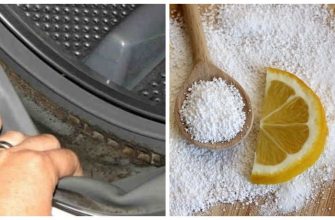Contents
- Clean the Kitchen Cabinets
- Remove Limescale from the Kettle
- Clean the Sink
- Restore Shine to the Microwave
- Clean Range Hood Filters
- Oven Cleaning
- Refrigerator Cleaning
- Bringing Dishes to a Shine
- Cleaning an Induction Cooktop
- Tidying up a Gas Stovetop
- Cleaning Gas Stove Grates
- Cleaning a Kitchen Apron
- Cleaning Windowsills
- Removing Burnt-on Food from Pans
Dive into these 14 simple yet effective methods to transform your kitchen into a pristine sanctuary. From tackling stubborn grease to banishing limescale, these tips will leave your kitchen sparkling and inviting. Say goodbye to kitchen woes and hello to a fresh, gleaming space where cooking becomes a joy!
Clean the Kitchen Cabinets
- Mix 1 cup of water, ½ cup of vinegar, and ½ cup of vodka. Stir well and transfer to a spray bottle. For added disinfecting power, add a few drops of eucalyptus oil. This unique solution is perfect for removing lime and grease buildup.
- Note: Be sure to wear rubber gloves during the process and ventilate the area.
Remove Limescale from the Kettle
- To descale the kettle, prepare one or two packets of citric acid (20–25g each). The amount of citric acid depends on the kettle’s condition and the amount of limescale.
- Fill the kettle two-thirds full with cold water, then open the packet(s) of citric acid and add it to the water.
- Bring the water to a boil and let it boil for a few more minutes (3–5 minutes).
- Check if the limescale has come off the kettle. To do this, remove the kettle from the heat and tilt it in different directions—any remaining limescale in the water will indicate how effectively the cleaning went.
- After cleaning, drain the dirty water and rinse the kettle thoroughly.
- Fill the kettle with clean water, bring it to a boil, and then pour out the water. Repeat this procedure twice before everyday use.
Clean the Sink
- To tackle limescale buildup, use rubbing alcohol. Add a little rubbing alcohol to water, apply the solution to the sink surface, and rinse with hot water after 10 minutes.
Restore Shine to the Microwave
- You’ll need water (400–500ml), a container for water, and 2 tablespoons of vinegar (9%) or 1 teaspoon of 70% essence.
- Pour water into a plate, add vinegar, place the solution in the microwave, and heat it for 5 minutes (or 10–15 minutes depending on the level of dirt). Allow the vinegar vapors some time to dissolve the dirt on the walls of the microwave, then start cleaning the inside.
- Note: Don’t forget to wear rubber gloves.
Clean Range Hood Filters
- Soak heavily soiled kitchen hood filters in water using a sprayer. Then, apply a chlorine-based bathroom cleaner with a toothbrush. Leave it on for 10 minutes, then rinse under running water.
Oven Cleaning
- For oven cleaning, take 1 cup of baking soda, add 1 tablespoon of dish soap, and enough water to make a pancake batter consistency. Apply the resulting paste to the soiled surface and leave it for 15 minutes. Then rinse the oven.
Refrigerator Cleaning
- To clean the inside of the refrigerator and eliminate unpleasant odors, use a mixture of 2 tablespoons of baking soda dissolved in a liter of warm water. Wipe all surfaces with a soft cloth soaked in the solution. Then rinse the walls with a damp cloth and dry thoroughly.
- For the exterior of the refrigerator, it’s best to use a sponge soaked in soapy water. Rinse the solution thoroughly to avoid streaks. Don’t forget to clean the back wall, where dust accumulates the most. You can use a long-handled brush to easily remove dust and cobwebs.
Bringing Dishes to a Shine
- Mustard powder is great for washing dishes to remove grease and deposits. Simply apply a little powder to a sponge, then wipe the surfaces of plates and cups. Rinse with running water. The dishes will sparkle like new!
Cleaning an Induction Cooktop
- Toothpaste and a toothbrush are perfect for cleaning an induction cooktop. Just squeeze the toothpaste onto the brush and apply it to the areas where deposits have formed. Wait 10–15 minutes, then wipe the surface with a damp cloth.
Tidying up a Gas Stovetop
- A regular bar of soap works wonders for cleaning a gas stove. Grate the soap on a coarse grater, dissolve the soap flakes in warm water to make a thick mass. Apply the resulting paste to the stove for 15 minutes. After a quarter of an hour, clean the surface of the stove with warm water.
Cleaning Gas Stove Grates
- Gas stove grates can be cleaned to a shine by soaking them in a small amount of ammonia for 7–8 hours.
- Note: Be sure to wear rubber gloves during the process!
Cleaning a Kitchen Apron
- To remove grease stains from a kitchen apron, use a concentrated soap solution. It is equally effective for both plastic and tile surfaces. It’s best to grate a little laundry soap into a container, dilute it with water, and use the resulting mass to rub problem areas until all grease stains and streaks are gone.
Cleaning Windowsills
- A mixture of calcined soda and laundry detergent (1 tablespoon each) can remove grease stains, dirt, and yellowing from windowsills.
Removing Burnt-on Food from Pans
- To clean a ceramic-coated pan of burnt-on food, grease residue inside and out, try the following method. Pour water into a wide container so that the pan fits completely. Add a few tablespoons of dishwashing gel and a handful of calcined soda. Then place the container with the pan and contents on the stove and bring to a boil for half an hour. Wait until the liquid cools down, remove the pan, rinse it with water, and wipe it clean.
Liked it? Share with friends!

















